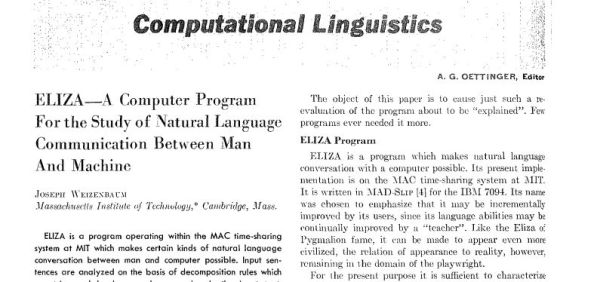The last time we checked in with the ELIZA archeology project, they had unearthed the earliest known copy of the code for the infamous computer psychiatrist written in MAD-SLIP. After a lot of work, that version is now running again, and there were a number of interesting surprises.
While chatbots are all the modern rage, [Joseph Weizenbaum] created what could be the first one, ELIZA, in the mid-1960s. Of course, it wasn’t as capable as what we have today, but it is a good example of how simple it is to ape human behavior.
The original host was an IBM 7094, and MAD-SLIP fell out of favor. Most versions known previously were in Lisp or even Basic. But once the original code was found, it wasn’t enough to simply understand it. They wanted to run it.














